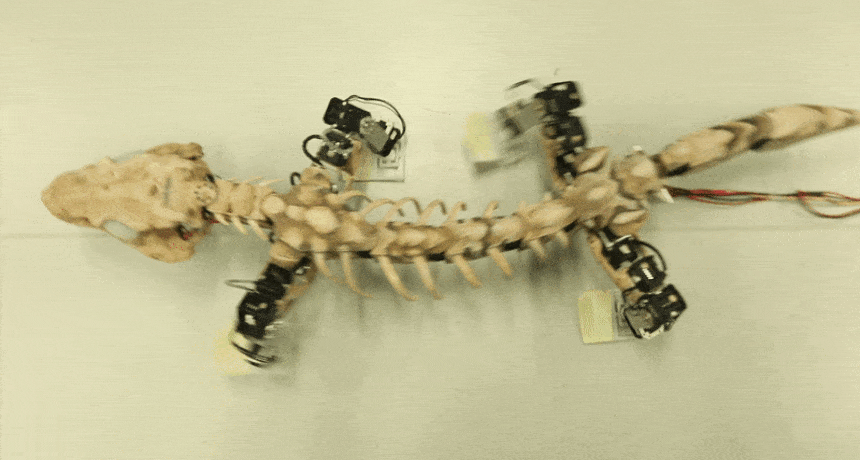his robot shows how an ancient creature might have walked
- GaneshMartin (Hosur)
- Apr 12, 2019
- 3 min read
An ancient four-footed critter stomped around what is now Germany some 280 million to 290 million years ago. One of the earliest creatures to live fully on land, it was pretty good at trekking about, a new study finds. For their study, researchers relied on computer simulations, imitation skeletons and fossil footprints.
They even built a walking robot —the OroBot — to find out how the creature likely moved. The results suggest that efficiently walking upright evolved earlier than researchers once thought.
The scientists started with fossil evidence of Orobates pabsti (Oh-roh-BAY-tees PAB-sty). It was one of the earliest amniotes (AM-nee-oats). And unlike amphibians, which have young that must live in the water, amniotes can live entirely on land. Amniotes first arose some 350 million years ago.
Membranes surrounded their developing young. This allowed amniotes to walk away from a tadpole-type life stage in the water. Reptiles and birds instead surround their embryos with an egg. Most mammal embryos grow inside their mother.
This amniotic membrane was key to allowing early reptiles to leave the water and thrive in drier habitats, says John Nyakatura. He is a paleontologist — someone who studies fossils — at the Humboldt University of Berlin, Germany. He also led the new study.
Learning how early amniotes walked on land could help scientists better understand their evolution from earlier creatures.
It also could help explain how amniotes spread globally, Nyakatura says — eventually becoming reptiles, birds and mammals. “Orobates, our focus fossil in this story, is a very close cousin to the last common ancestor of mammals and reptiles,” he explains.
O. pabsti arrived on the scientific scene in 2004. In life, it looked like a large lizard around the size of an iguana. The first fossils showed up at a site in central Germany known as the Bromacher locality.
Hundreds of millions of years ago, this site was in a valley between mountains. From time to time, when there was a storm, the valley would flood. Animals strolling through the area left footprints behind in the squishy mud. Sometimes, those animals might die there as well. Eventually buried in mud, they would begin the process of becoming a fossil. O. pabsti is one of the most complete fossils found at this site.
“These are things preserved from the tip of the nose to the tip of the tails,” notes Stuart Sumida. He is a vertebrate paleontologist, someone who studies only fossils with backbones. Sumida, who works at California State University in San Bernardino, was not involved in the new study. The new fossils “are so well preserved that we can generate [ideas] about how they moved,” he says.
The Bromacher locality doesn’t just have lovely fossil bones. It has fossilized footprints, too.
A string of those footprints from the same animal is called a trackway. Scientists were able to link one trackway at the Bromacher locality to the O. pabstifossil. Those tracks offered more clues to how the animal might have walked.
But there’s more to understanding walking than knowing where an animal put its feet. For instance, they might even build a robot, says Kamilo Melo. He is a bioroboticist — someone who studies robots that imitate living things. He works at École Polytechnique Fédérale de Lausanne in Switzerland. What’s unique about the new study, he says, is that the scientists have combined several of these tactics together. That way, they get the best possible understanding of an ancient creature’s gait.
And, Sumida adds, the German team confirmed something that only the fossil’s original finders suspected: O. pabsti lived its whole life on land — and walking instead of wriggling.







Comments